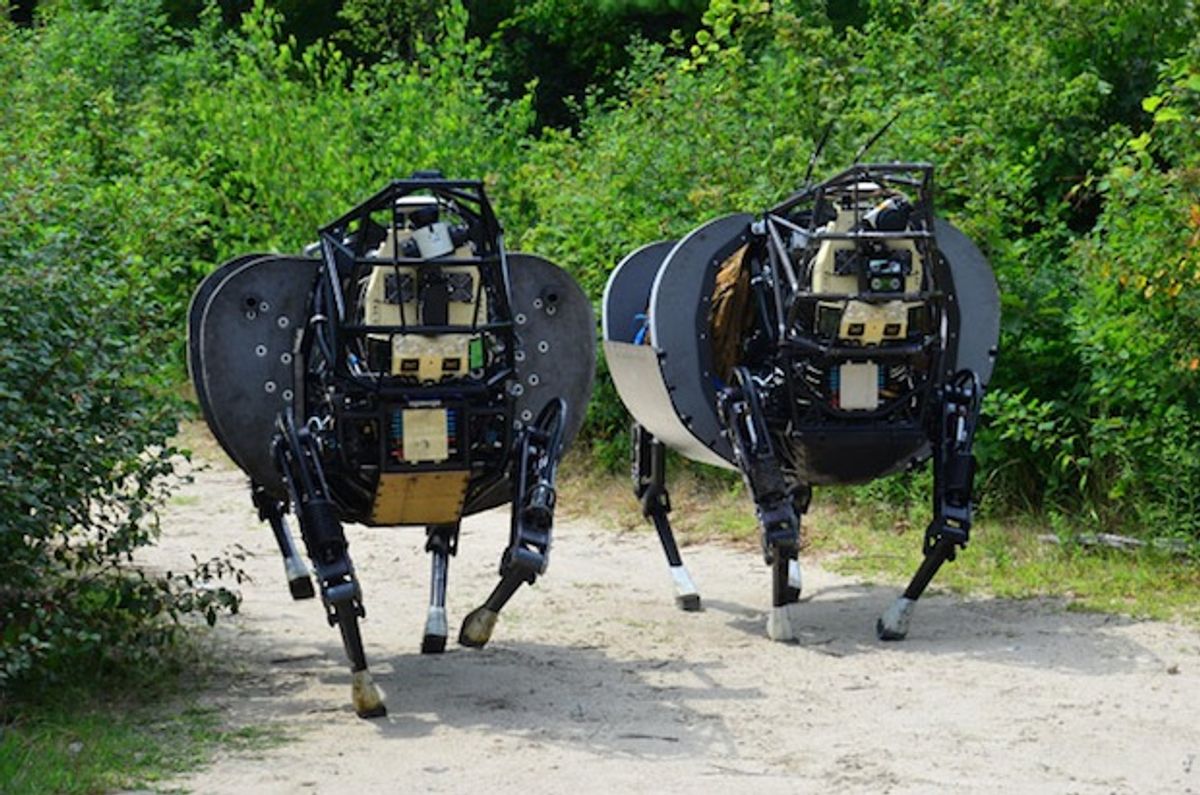Last week at the Army Aviation Symposium, in Arlington, Va., a U.S. Army officer announced that the Army is looking to slim down its personnel numbers and adopt more robots over the coming years. The biggest surprise, though, is the scale of the downsizing the Army might aim for.
At the current rate, the Army is expected to shrink from 540,000 people down to 420,000 by 2019. But at last week's event, Gen. Robert Cone, head of the Army's Training and Doctrine Command, offered some surprising details about the slim-down plans. As Defense News put it, he "quietly dropped a bomb," saying the Army is studying the possibility of reducing the size of a brigade from 4,000 soldiers to 3,000 in the coming years. To keep things just as effective while reducing manpower, the Army will bring in more unmanned power, in the form of robots. From the Defense News story:
“I’ve got clear guidance to think about what if you could robotically perform some of the tasks in terms of maneuverability, in terms of the future of the force,” he said, adding that he also has “clear guidance to rethink” the size of the nine-man infantry squad.
“When you see the success, frankly, that the Navy has had in terms of lowering the numbers of people on ships, are there functions in the brigade that we could automate—robots or manned/unmanned teaming—and lower the number of people that are involved given the fact that people are our major cost,” he said.
The thing to keep in mind about initiatives like this is that the army personnel who are actually flying airplanes or shooting guns or disarming bombs don't make up the majority of the army. There's a concept called tooth-to-tail ratio, which is the ratio of soldiers directly involved in fighting missions (tooth) to those involved in supporting activities (tail). A typical ratio is about 1/3 tooth to 2/3 tail, which means that you're spending a lot of resources on logistics, supplies, and other efforts to support the actual combat operations. According to Gen. Cole, the Army sees that as an opportunity to become more efficient. "Maybe it’s one-half to one-half," he said. "The point is you get to keep more tooth, more folks that actually conduct operations on the ground and less supporting structure."
And one way of becoming more efficient is by using support robots—a trend we're seeing not only in the Army but other U.S. armed forces as well. Robots will likely include autonomous vehicles that can transport supplies, autonomous aircraft that can transport supplies, and other autonomous robots that can transport supplies (like the LS3 "robot mule," pictured above). As you may have noticed, there's a theme here, but most of those support robot programs are in the early stages and whether they'll prove effective, only time will tell.
[ Defense News ]
Evan Ackerman is a senior editor at IEEE Spectrum. Since 2007, he has written over 6,000 articles on robotics and technology. He has a degree in Martian geology and is excellent at playing bagpipes.



